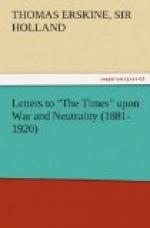Prefatory Note
As the exigencies which prompted, at a late date, the change of plans in the compilation of this work, left the messages and papers of the McKinley administration incomplete and defective, it has been felt that the time has now arrived for their collection. In this supplement are included the messages, proclamations and executive orders of President McKinley which do not appear in Volume X, and those of his successor, President Roosevelt, to date. They set forth the home affairs of the nation, and illustrate the stability of the government and institutions of the United States. They demonstrate that affairs were conducted with attention and directness unaffected by the apparently distracting, but glorious, incidents, which marked her interposition by arms and the extension of her sheltering aegis to Cuba. They teach us that the foundations of this country are deep-rooted and that the process of nation-building, as recounted in these volumes, has proceeded upon right lines and with an unbounded fidelity to principle and purpose.
George Raywood Devitt.
Washington, D.C., October 1, 1902.
SUPPLEMENT
* * * * *
William McKinley
March 4, 1897, to September 14, 1901
* * * * *
Additional Messages, Proclamations, Executive Orders and Last Public Utterance to the People at Buffalo
William McKinley
(For portrait and early biographical sketch see Vol. X, pp. 125, 126, 127)
At the National Republican Convention which met at Philadelphia in June, 1901, William McKinley was again nominated the Republican candidate for the Presidency of the United States. At the November election he was re-elected, receiving 292 electoral votes, against 155 votes for William J. Bryan.
In September, 1901, he accepted an invitation to be present at the Pan-American Exposition at Buffalo. On September 5 he delivered his last public utterance to the people, in the Temple of Music, to a vast audience. The next day, returning from a short trip to Niagara Falls, he yielded to the wishes of the people and held a reception in the Temple. Among those who, passing in single file, took him by the hand, was one who approached with his hand wrapped and held to his breast as though injured. Concealed within the covering was a loaded revolver; and as he gave his other hand to the President, a token of friendship, he quickly fired two shots, from the effects of which the President sank into the arms of those near him. He was taken to the residence of Mr. John G. Milburn, President of the Exposition Company, where on September 14, 1901, after an unexpected relapse, he died. The body was taken to Washington, D.C., and the state funeral was held in the rotunda of the Capitol. Thence the body was taken to his home in Canton, Ohio, for interment.




